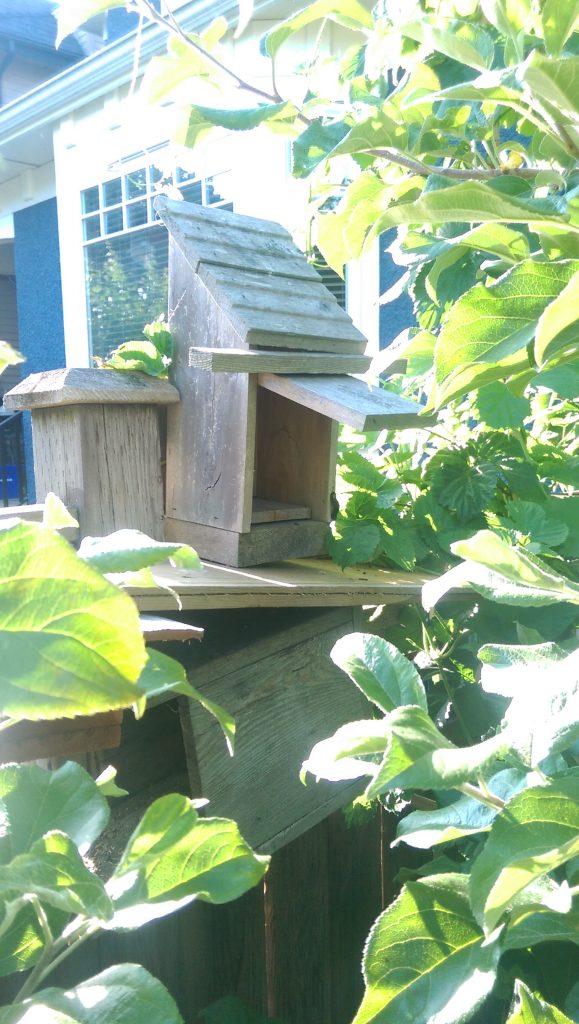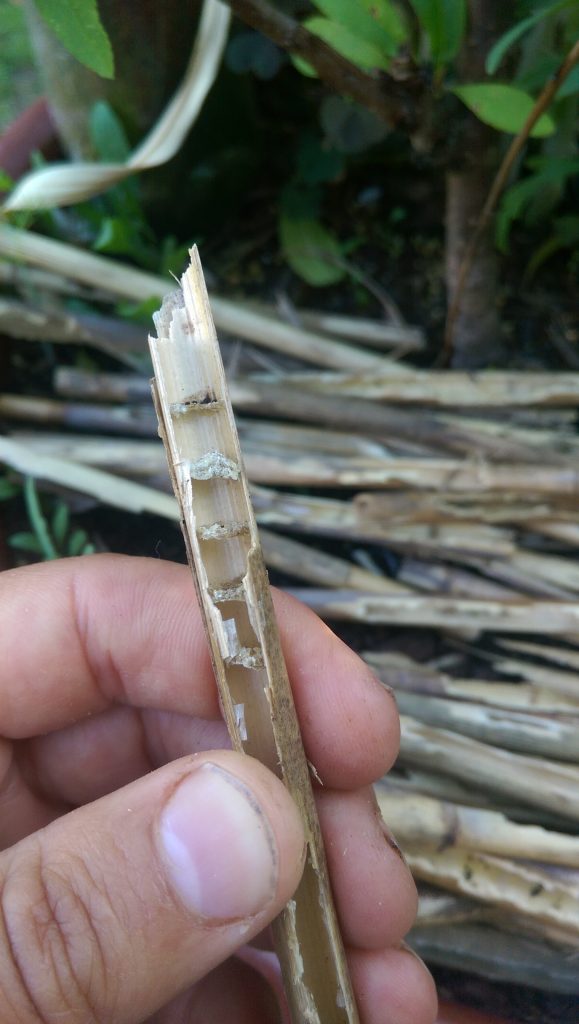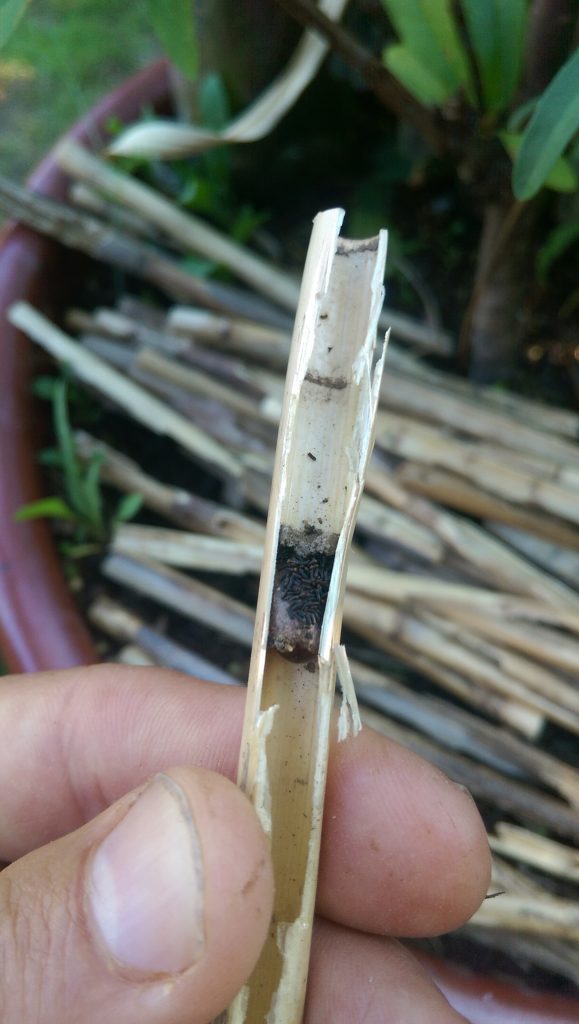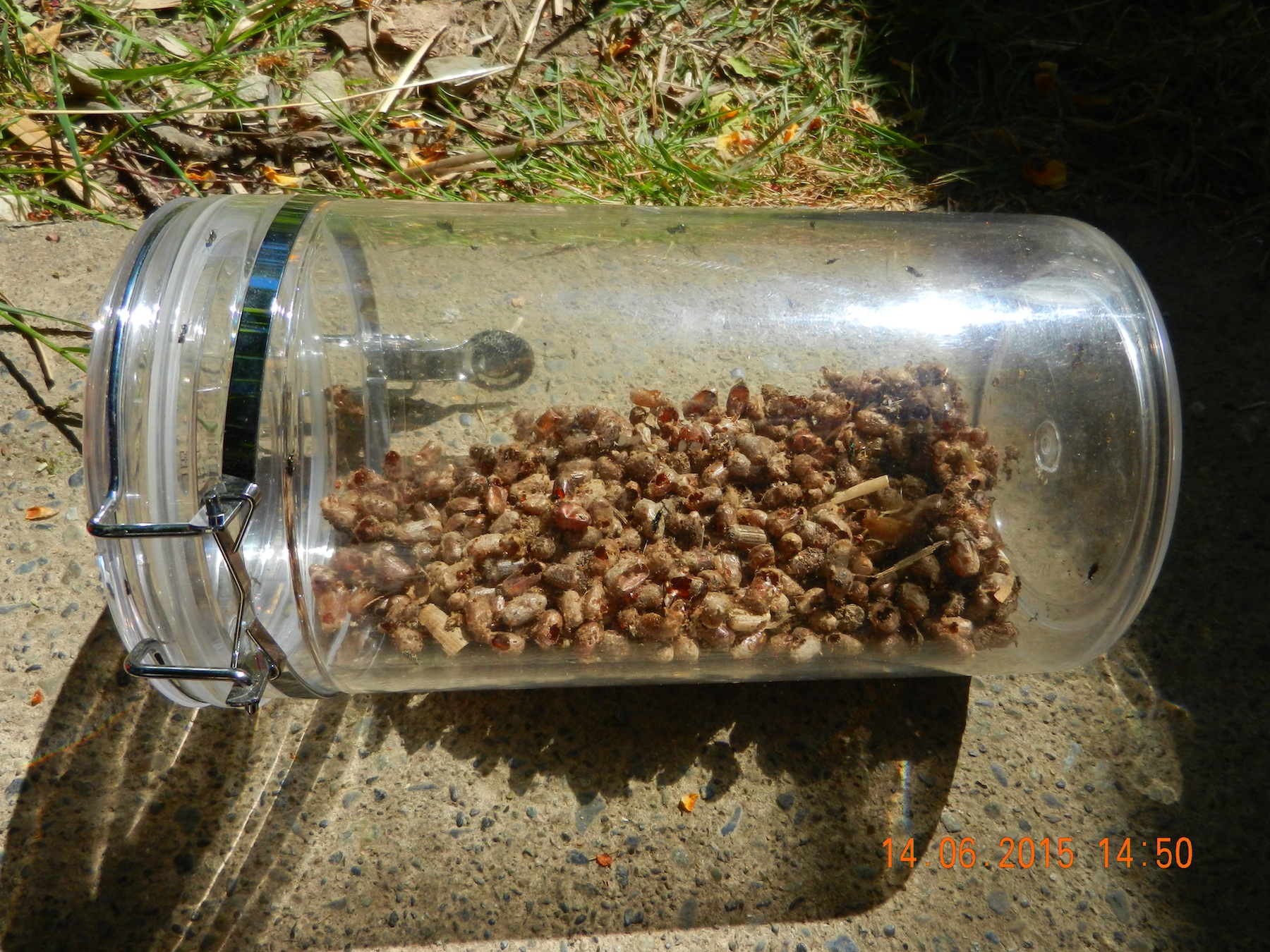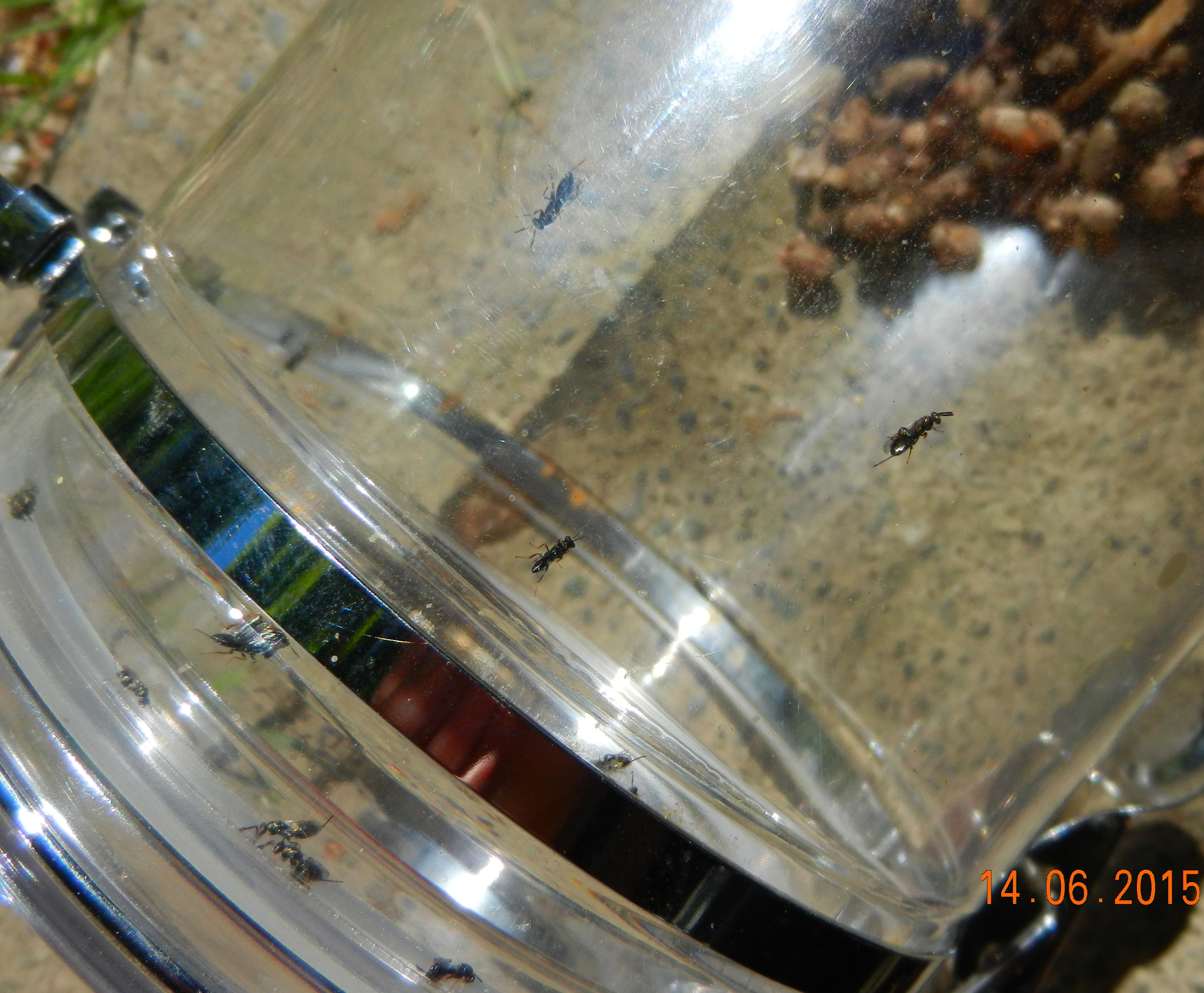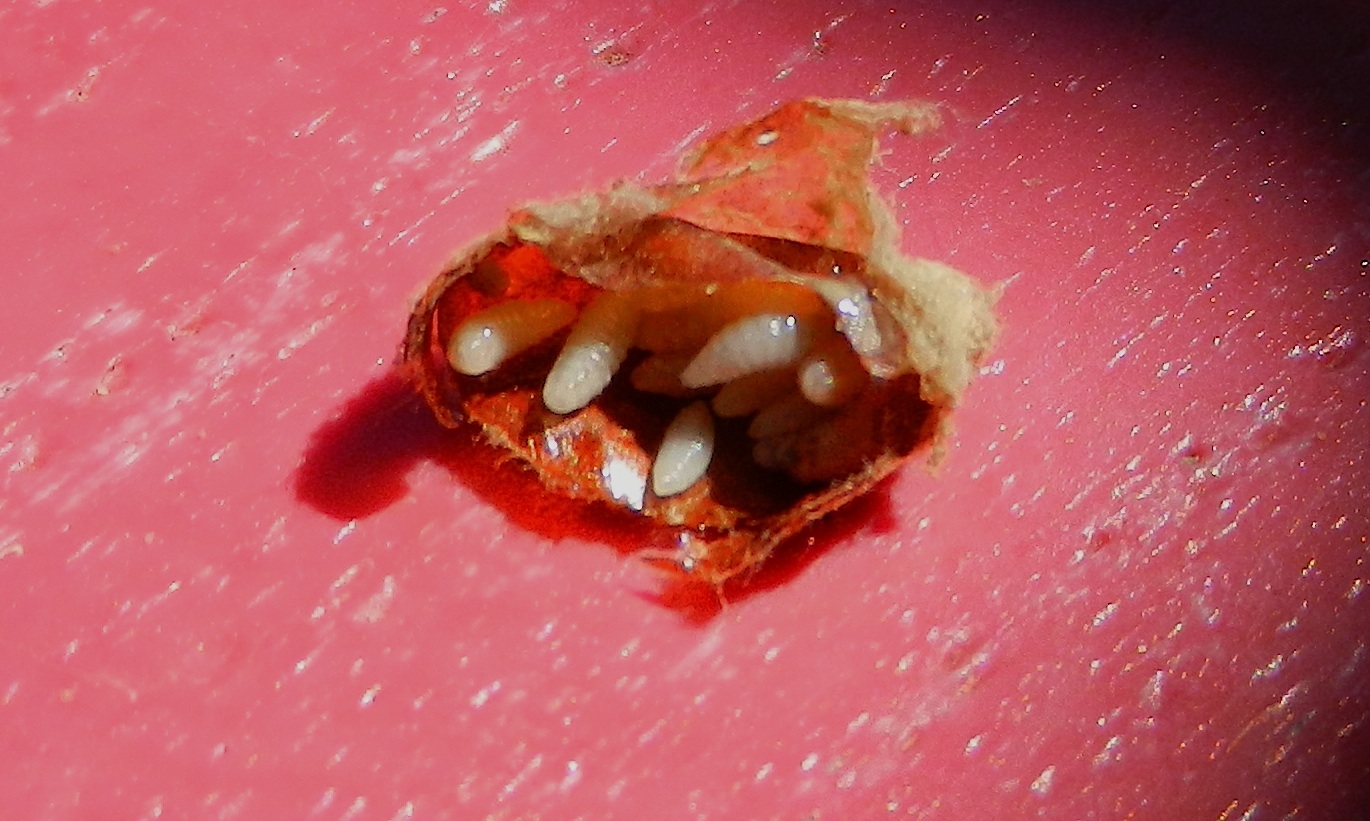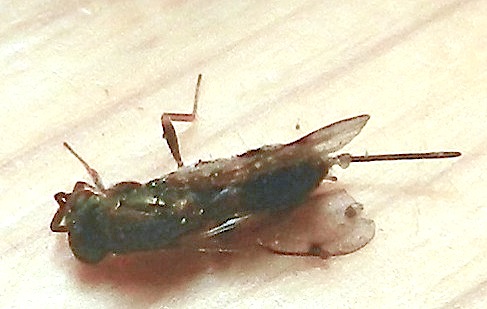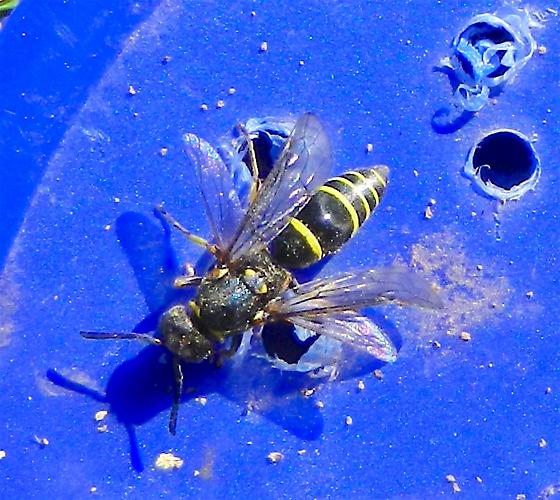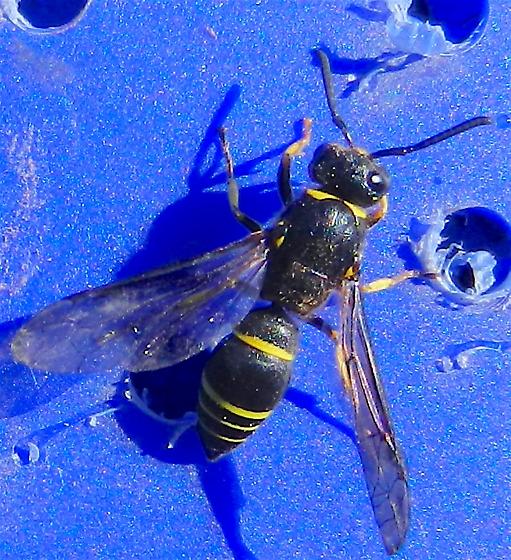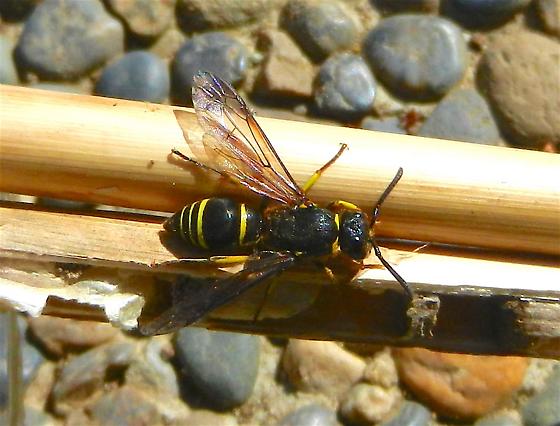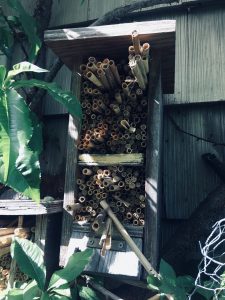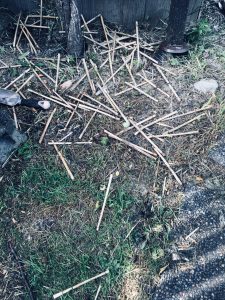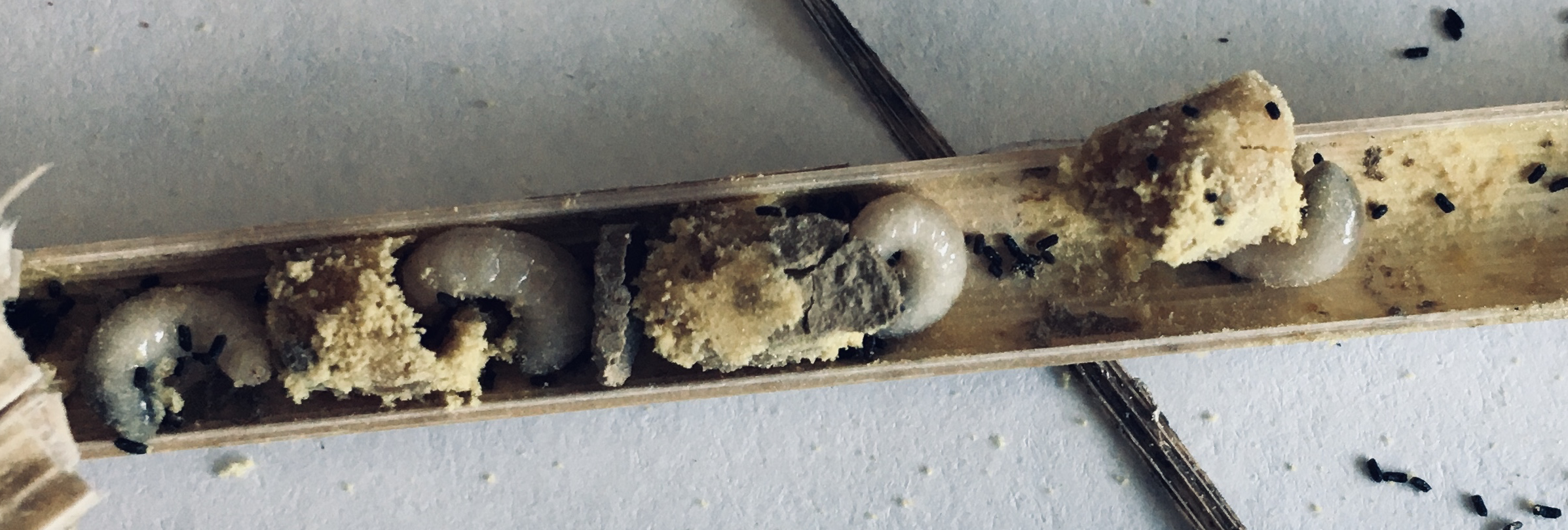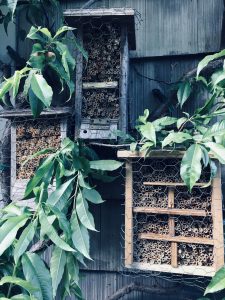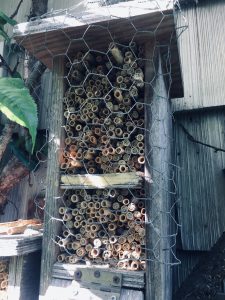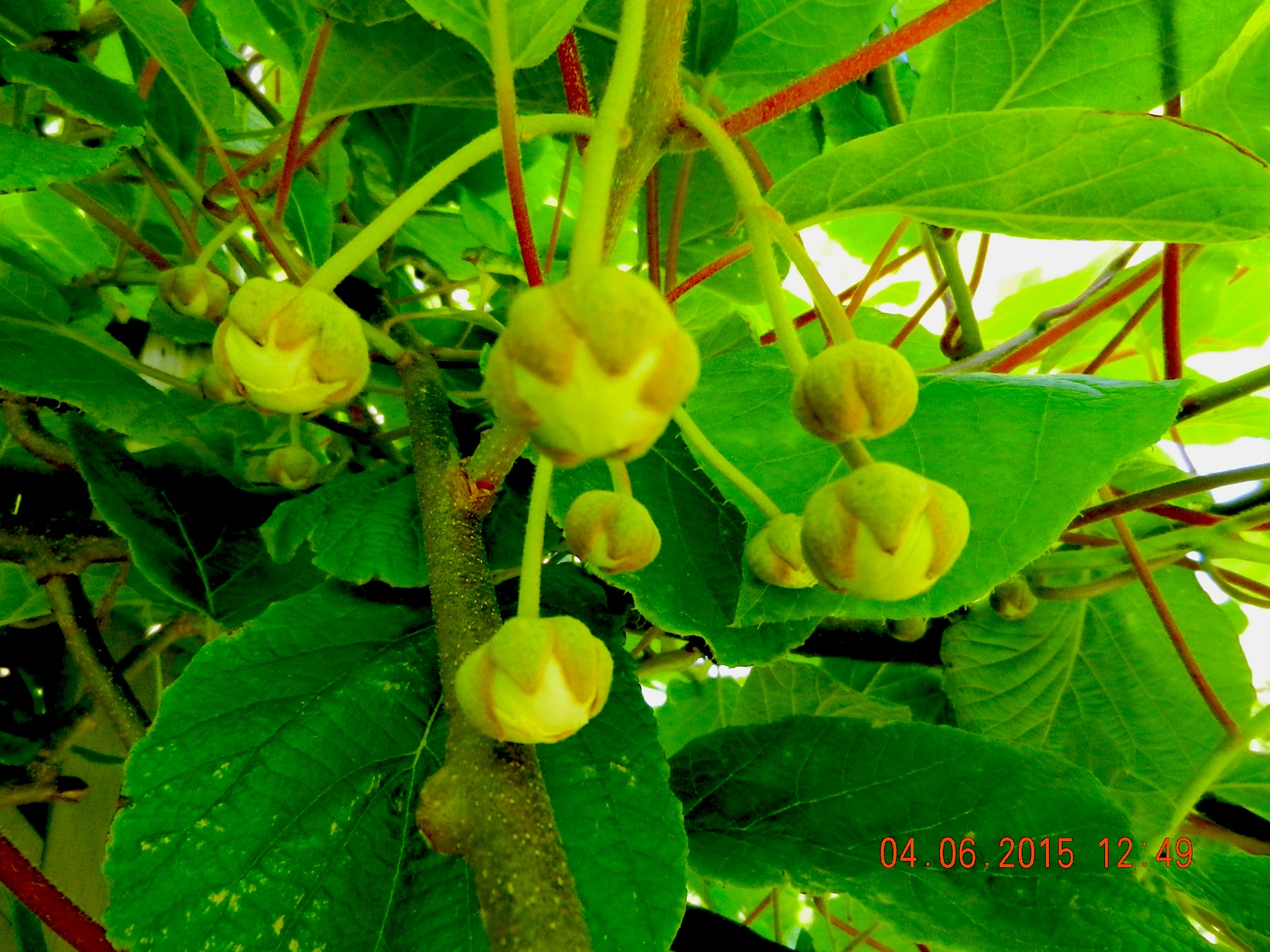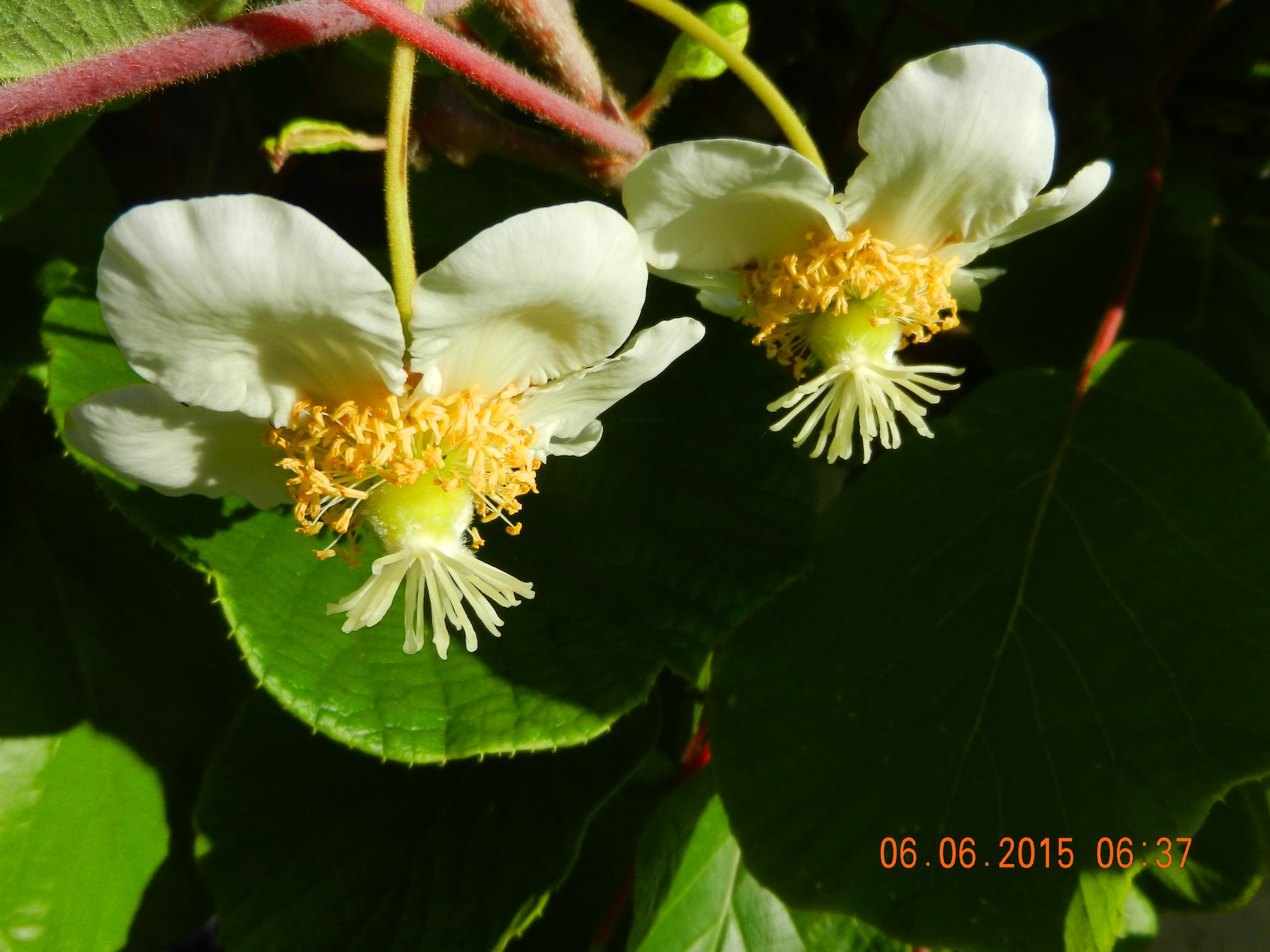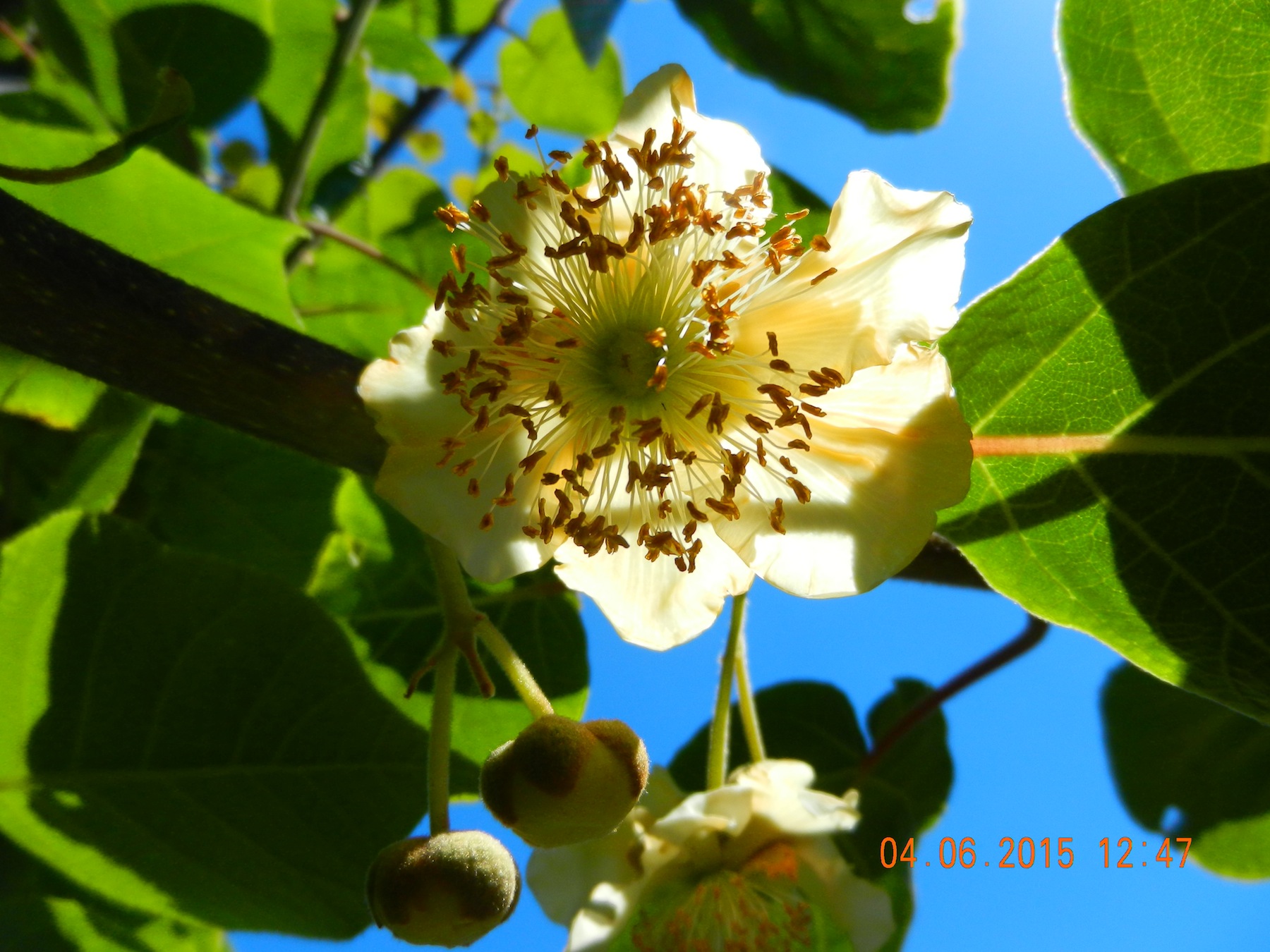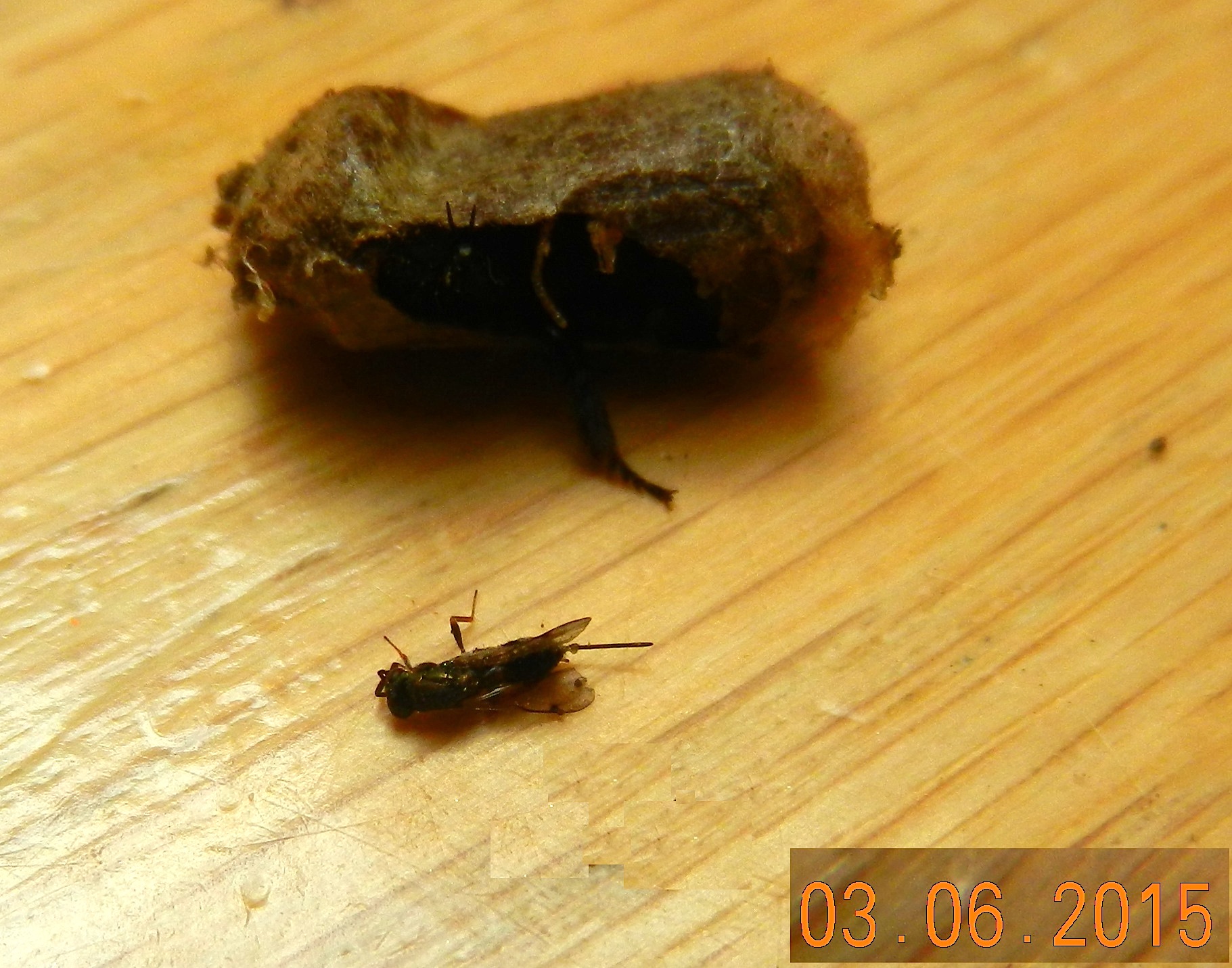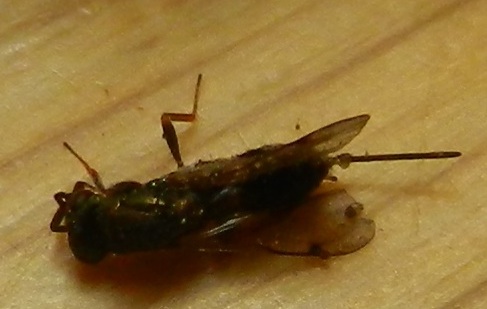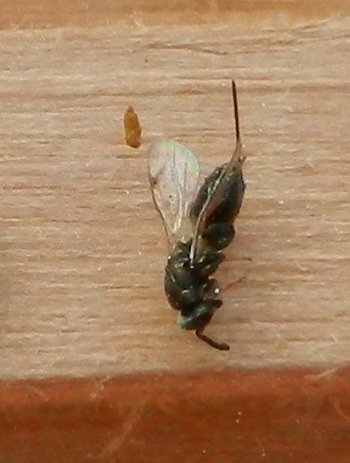ARCHIVAL: This post has been re-dated from 2016 in order to position it closer in the blog to Mason Bee Information
I had a report recently from a mason bee enthusiast telling me that his mason bee colony had been attacked by rats and most of the cocoons had been taken. These images show what happened. One thing I note in the pictures is that the house wqas on a fence with a platform in front of the bank of tubes. It is best to have nothing that birds or rodents can stand on, and that might have prevented this type of predation. If one is concerned at this time of year, it would be a good idea to gently fasten a fine mesh wire screen to the opening of the box, or since the activity of the bees is probably finished, moe the house to a cooler safe location — gently because you want to be sure that the bee eggs have been secured into the food matrix.
Month: June 2021
Release of the Last Mason Bees and isolation of Parasitic Mono wasps June 2015
The natural time for mason bee adults to emerge from the cocoons is normally 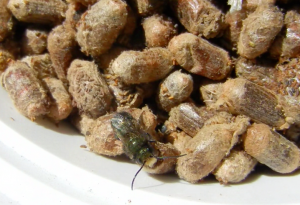 quite early, in February or March in the lower part of Vancouver Island. This year I decided to hold some dormant in the refrigerator for a longer time to see if they would still hatch out successfully. By early June some of the bees were actually emerging and remaining very still in their jars in the refrigerator.
quite early, in February or March in the lower part of Vancouver Island. This year I decided to hold some dormant in the refrigerator for a longer time to see if they would still hatch out successfully. By early June some of the bees were actually emerging and remaining very still in their jars in the refrigerator.
As soon as jar was removed from the fridge, once they heated up they would fly off. (Note: as of June 25 they are still very active around the nest boxes.)
After a week of leaving the cocoons, I isolated the unhatched ones in a sealed jar, and sure enough in a few days the parasitic wasps were on the inside of the container.
Each time i had made a release of cocoons throughout the spring, I waited for at least a week and if they didn’t hatch, I opened them with a razor blaid and released any live bees. about one in 30 unhatched cocoons would have parasitic larvae, so maybe they are programmed to emerge more than a week after the regular bees emerge, in that way, they would have active cocoon building so they could immediately begin laying eggs in the cocoons. ??
NOTE: I have updated this 2015 post in order to make it appear closer to the other mason bee information
Identification of Wasp Larvae from Mason Bee tubes
ARCHIVAL: This post has been re-dated from 2016 in order to position it closer in the blog to Mason Bee Information
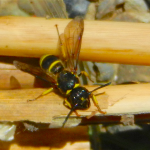
In the previous post I indicated I was trying to identify wasps that had taken up residence in mason bee tubes, without actually parasitizing the mason bees
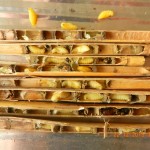 I found the larvae in tubes while removing the mason bee cocoons in the winter, and transferred them to a separate jar where I let them hatch. By May 1 they were hatching so after taking a few pictures, I sent the images off to BugGuide.
I found the larvae in tubes while removing the mason bee cocoons in the winter, and transferred them to a separate jar where I let them hatch. By May 1 they were hatching so after taking a few pictures, I sent the images off to BugGuide.
The result after several months was an identification by an expert in entomology : Our thanks to Matthias Buck of The Invertebrate Zoology Section, Royal Alberta Museum, Edmonton, Alberta, Canada
http://bugguide.net/node/view/1218699#2158789
So he thinks there are actually three species represented in these pictures.
Kingdom Animalia (Animals)
Phylum Arthropoda (Arthropods)
Subphylum Hexapoda (Hexapods)
Class Insecta (Insects)
Order Hymenoptera (Ants, Bees, Wasps and Sawflies)
No Taxon (Aculeata – Ants, Bees and Stinging Wasps)
Superfamily Vespoidea (Yellowjackets and Hornets, Paper Wasps; Potter, Mason and Pollen Wasps and allies)
Family Vespidae (Yellowjackets and Hornets, Paper Wasps; Potter, Mason and Pollen Wasps)
Subfamily Eumeninae (Potter and Mason Wasps)
Genus Ancistrocerus
Mason bee larvae and predation
I know I should have put the chicken wire fencing up sooner, as a bird, probably a woodpecker or a rat pulled out the top 4 cm of tubes from two of my boxes, Fortunately it never opened all the tubes but a few were broken so I was able to open them and see the larvae stage inside
you can see the larvae attached to the plug of pollen in each section of the phragmites tube. At this stage one should not move or jar the tubes as the larvae can fall off the plug of food. I was able to tape back up the tubes and the larvae inside should survive OK as long as they can reattach to the food pellet.
The solution, 1 inch opening chicken wire:
Mason bees pollinating kiwi fruit and the monodontomerus, parasitic wasp
This week I took out a few more mason bee which had already emerged from their cocoons while still in the containers in the refrigerator. They sit very dormant when cold but take only minutes to get active as they warm up. Their normal time of emergence from dormancy would be much earlier in the year but releasing them now ensures pollination of the late blooming fruits.
It was time to add a few more bees to the population outside since the strawberries continue to bloom and the kiwi fruit have started to bloom with this very warm weather we are having.
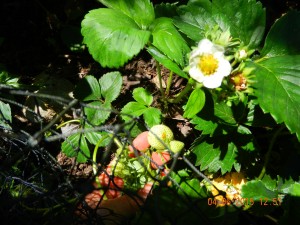
I also went around to all my mason bee boxes and removed the few cocoons that had not already hatched.
They either contained a dead bee or the larvae of the Monodontomerus, or “mono” which is a parasitic wasp that lays its eggs on the larva, usually within the cocoon of the mason bee. The tiny adult wasps emerged from one such cocoon. You can see the long penetrating ovipositer on the tail end. These have to be destroyed before they get to the bee larvae in the new cocoons.
NOTE: I have updated this 2015 post in order to make it appear closer to the other mason bee information
